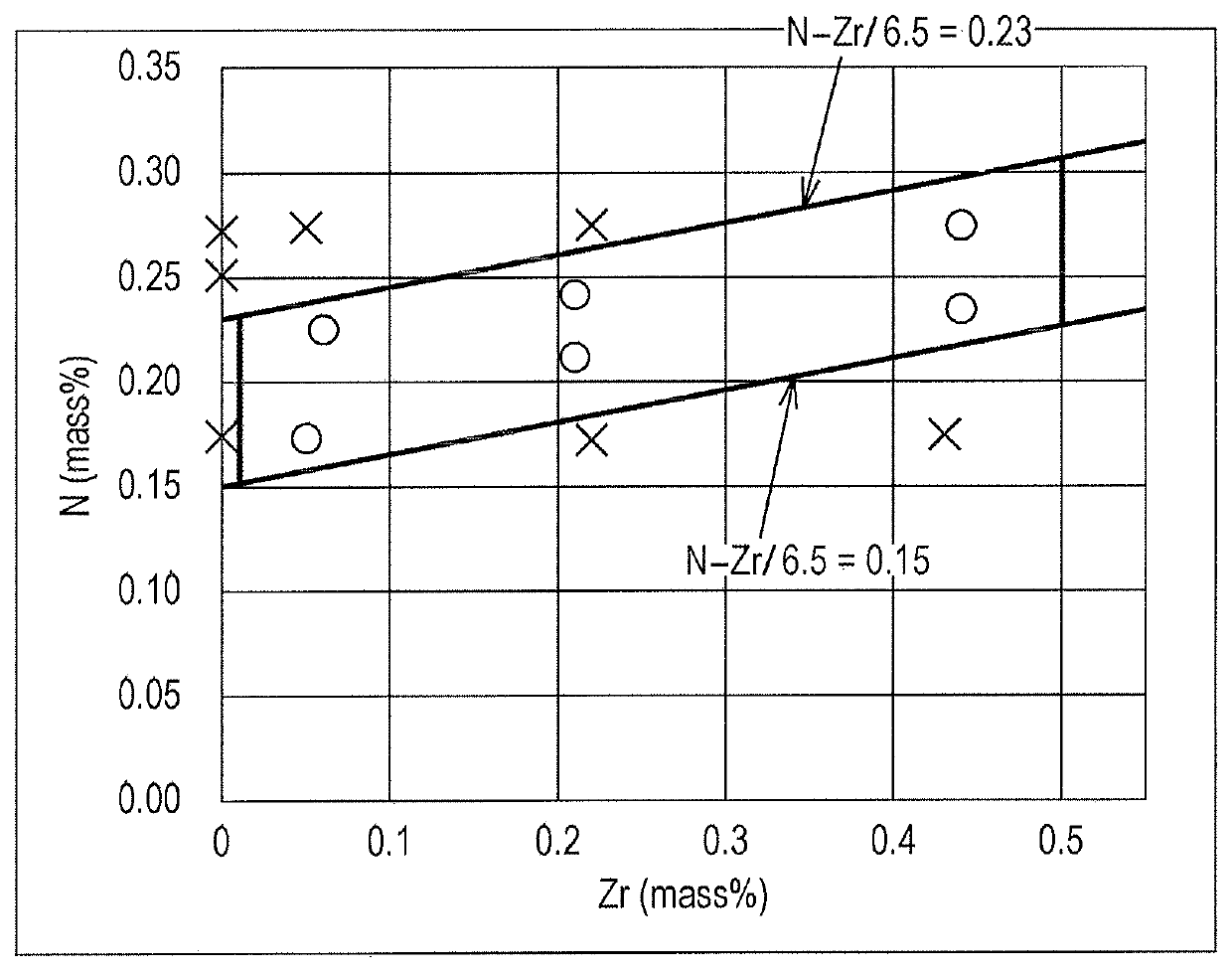Ferritic-austenitic duplex stainless steel sheet
a technology of stainless steel and duplex, which is applied in the direction of heat treatment equipment, manufacturing tools, furnaces, etc., can solve the problems of reduced strength of weld joints, reduced -phase fraction compared with prior, and difficult use of structural members, and achieve excellent strength
- Summary
- Abstract
- Description
- Claims
- Application Information
AI Technical Summary
Benefits of technology
Problems solved by technology
Method used
Image
Examples
example
[0066]The present invention will now be described in more detail with reference to examples. Note that the present invention is not limited to the examples below.
[0067]Steels having a chemical composition as shown in Table 1, which were produced by melting using a 50-kg small vacuum melting furnace, were heated to 1250° C. and thereafter hot-rolled to form a hot-rolled steel sheet having a sheet thickness of 4.0 mm. Subsequently, annealing was performed under conditions: in air atmosphere, at 1100° C., and for 1 minute. Thereafter, shot blasting and grinding with a grinder were performed to remove surface scale, and thus a hot-rolled and annealed sheet was obtained. Each of the hot-rolled and annealed sheets obtained as described above was evaluated on the following items.
[0068](1) γ-Phase Fraction
[0069]A test piece of 15 mm length and 10 mm width was cut from the hot-rolled and annealed sheet and was embedded in a resin in such a manner that a cross section parallel to the rolling ...
PUM
| Property | Measurement | Unit |
|---|---|---|
| thickness | aaaaa | aaaaa |
| current | aaaaa | aaaaa |
| speed | aaaaa | aaaaa |
Abstract
Description
Claims
Application Information
 Login to View More
Login to View More - R&D
- Intellectual Property
- Life Sciences
- Materials
- Tech Scout
- Unparalleled Data Quality
- Higher Quality Content
- 60% Fewer Hallucinations
Browse by: Latest US Patents, China's latest patents, Technical Efficacy Thesaurus, Application Domain, Technology Topic, Popular Technical Reports.
© 2025 PatSnap. All rights reserved.Legal|Privacy policy|Modern Slavery Act Transparency Statement|Sitemap|About US| Contact US: help@patsnap.com

